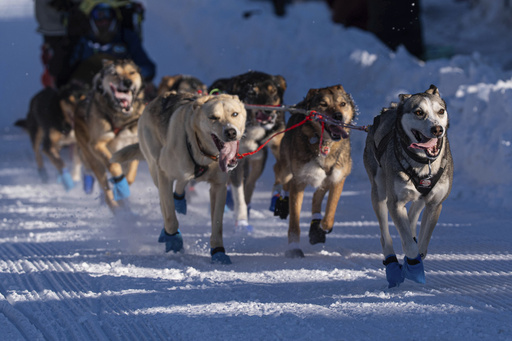ANCHORAGE, Alaska — Due to insufficient snow covering a hazardous section of the trail, the organizers of the renowned Iditarod sled dog race have decided to relocate the official start of the event further north.
While the ceremonial kickoff will still occur in Anchorage on March 1, the competitive start for the 33 participating teams will take place two days later in Fairbanks, approximately 360 miles (579 kilometers) to the north.
This change marks the fourth instance in which the race has been shifted due to snow scarcity, with previous official starts in Fairbanks occurring in the years 2003, 2015, and 2017.
Initially, race officials had indicated that the race would proceed as scheduled from the Anchorage area. However, in a recent statement, trail breakers reported that the lack of snowfall since the announcement on January 31 forced them to classify a segment of the trail—extending from the Rohn to Nikolai checkpoints, which is situated north of the Alaska Range—as impassable.
“Following extensive discussions with our lead Trail Breaker and other knowledgeable individuals familiar with the terrain, and acknowledging the absence of new snow in the forecast, we have no option but to prevent the teams from navigating through that 20-mile (32-kilometer) section,” stated Race Marshal Warren Palfrey. “It’s unfortunate because the rest of the trail up to Nome is in excellent condition.”
The safety of the dogs, mushers, and volunteers continues to be a paramount concern for the Iditarod organizers, as emphasized in their announcement.
Even when conditions are snowy, this particular part of the Iditarod is recognized for having some of the most challenging trails throughout the entire 1,000-mile (1,609-kilometer) course across Alaska’s rugged wilderness.
The race’s guidance for mushers advises them to traverse this section in groups with other teams to ensure assistance if needed. The treacherous conditions can include wind-swept gravel bars, strong winds, rivers, glaciers, slippery surfaces, and icy patches at the bottom of canyons.
Participants are expected to arrive in Nome roughly ten days after the race commences.
